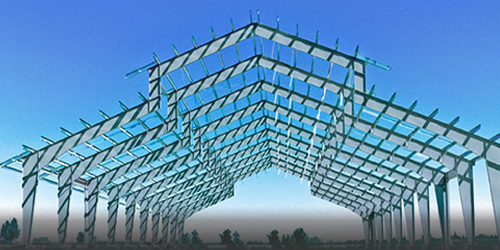The Competitive Advantage of Steel Buildings: Why Select This Superior Choice
Steel structures have actually emerged as an engaging option in the realm of construction for a plethora of reasons. The competitive side that steel buildings hold extends much beyond their first charm, making them a preferred alternative for those seeking longevity and flexibility in their building tasks.
Longevity and Durability
In the realm of sturdiness, building and longevity are essential facets that underscore the worth proposal of steel structures. Steel is renowned for its toughness and capacity to endure different ecological conditions, making it an optimal selection for lasting structures. Unlike typical products like wood or concrete, steel does not warp, fracture, or rot gradually, making certain that a steel building stays structurally sound for years.
One vital aspect adding to the resilience of steel structures is their resistance to parasites such as termites, which can create significant damage to wooden frameworks. Steel is likewise non-combustible, lowering the threat of fire damages and increasing the safety of residents. Furthermore, steel buildings need very little maintenance contrasted to other building materials, conserving both money and time in the future.
In addition, advancements in steel manufacturing technology have actually further enhanced the long life of steel structures by improving deterioration resistance and architectural honesty. With correct treatment and maintenance, a well-constructed steel building can last well over 50 years, providing a trusted and sturdy solution for various construction needs.
Cost-Effectiveness
With its various economic advantages, steel as a building product supplies a compelling economical option for numerous construction projects. The cost-effectiveness of steel buildings originates from several crucial elements. Firstly, the preliminary expense of steel may be greater than some typical products, but the lasting savings are significant. Steel frameworks need very little upkeep, reducing repair service and replacement expenses over time. Furthermore, steel is highly long lasting, which converts to lower insurance premiums as a result of decreased danger of damages from elements such as fire, insects, and all-natural disasters.
Steel structures are additionally energy-efficient, enabling for savings on heating and cooling expenses - steel buildings. In general, the cost-effectiveness of steel buildings makes them a smart financial investment for numerous building and construction demands.
Convenience in Layout
The flexibility of steel as a building product allows for a large range of ingenious design possibilities in building and construction jobs. Steel structures provide unparalleled adaptability in design, making them a favored selection for contractors and engineers.
Steel's versatility additionally enables modification to meet particular layout requirements. Whether it's rounded roof coverings, intricate facades, or one-of-a-kind geometric forms, steel can be molded to bring essentially any kind of design idea to life. Furthermore, steel structures can be easily expanded or customized, using future adaptability for adapting to changing requirements.
Moreover, using steel in construction allows for sustainable style methods. Steel is very recyclable, lowering environmental impact and promoting green construction. Its sturdiness and resistance to rust make certain that steel structures keep their visual allure and architectural honesty for several years ahead. Ultimately, the versatility of steel in design not only enhances the aesthetic appeal of buildings but also adds to their longevity and functionality.

Lasting Building Practices
Structure upon the structure of versatility in design, sustainable building methods in steel structures play a critical role in mitigating environmental impact and promoting long-lasting environment-friendly remedies. When steel structures get to the end of their lifecycle, the steel parts can be recycled and used in new construction projects, decreasing the demand for raw materials and reducing waste. Additionally, the energy efficiency of steel buildings adds to sustainability efforts.

Fast Building And Construction Timeline

Moreover, the structured procedure of setting up steel structures reduces building and construction time dramatically. The simpleness straight from the source of steel building design and the convenience of setting up add to faster project conclusion, making it an excellent option for clients with time-sensitive requirements (steel buildings). In addition, the capability to work on various elements at the same time, such as site prep work and foundation building and construction along with steel construction, further speeds up the overall building and construction timeline
Final Thought
To conclude, steel structures use a competitive benefit due to their durability, cost-effectiveness, adaptability in design, lasting construction techniques, and fast construction timeline. These aspects make steel buildings a remarkable option for numerous construction jobs, providing lasting benefits and worth. Choosing steel structures can lead index to improved efficiency, effectiveness, and sustainability in the building and construction market.
Unlike typical materials like timber or concrete, steel does not warp, split, or rot over time, guaranteeing that a steel structure remains structurally sound for years.
The adaptability of steel as a building product permits for a broad array of innovative style opportunities in construction tasks.Structure upon the foundation of convenience in design, sustainable building and construction practices in steel buildings play a crucial role in mitigating environmental effect and advertising lasting environmentally friendly options. When steel structures get to the end of their lifecycle, the steel components can be recycled and used in check that new building tasks, reducing the demand for raw materials and reducing waste.In final thought, steel buildings use an affordable benefit due to their longevity, cost-effectiveness, versatility in design, sustainable construction practices, and rapid construction timeline.